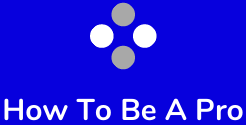Understanding appointment setting is a crucial step for anyone looking to thrive in sales, business development, or client management. Appointment setting is the process of reaching out to prospective clients, engaging them, and scheduling meetings that can ultimately lead to sales or partnerships. Many people underestimate how strategic appointment setting can be, often seeing it as just cold calls or emails. However, it requires a combination of research, communication skills, and timing to successfully get prospects to agree to a meeting. By learning the fundamentals, you develop a foundation that can elevate your sales performance dramatically. Appointment setting is the first step in creating a strong sales pipeline, ensuring your team or yourself consistently engages with qualified leads. Businesses that master this skill often see a smoother transition from prospecting to closing deals.
Learning appointment setting skills is not just for professional salespeople—it benefits entrepreneurs, freelancers, and small business owners as well. The ability to secure meetings effectively can drastically reduce the time and effort spent chasing leads that go nowhere. Strong appointment setting skills also boost confidence when interacting with prospects, which reflects positively on your brand or business. By understanding how to engage prospects strategically, you increase the likelihood of converting leads into paying clients. Industries such as software, real estate, consulting, and marketing heavily rely on appointment setters to fill their pipelines. Even small-scale startups can benefit by having a team member trained in appointment setting to kickstart client acquisition. Ultimately, mastering this skill opens doors to career growth and business expansion opportunities.
A free appointment setting course provides a low-risk way to gain these valuable skills. Typically, such courses are designed to teach the fundamentals of reaching out to leads, scheduling appointments, and managing follow-ups. Core modules often include communication techniques, cold calling, email outreach, handling objections, and using scheduling or CRM tools. While free courses might not cover every advanced strategy, they give learners a solid foundation to start practicing in real-world scenarios. The accessibility of free courses allows beginners to explore the field without financial commitment, which is ideal for students or those testing a career shift. By participating in these courses, learners can also identify their strengths and weaknesses early, giving them a roadmap for improvement. Many free courses also provide interactive exercises, which help in internalizing the techniques effectively.
Essential topics in a free appointment setting course typically cover multiple layers of skill-building. Students learn how to create a confident outreach strategy that aligns with their target audience. Understanding buyer personas and decision-makers is crucial, as it ensures that the messages sent resonate with the right individuals. Crafting persuasive scripts is another key area, emphasizing how to sound natural while still encouraging prospects to book meetings. Digital tools and automation are also covered, showing how software can streamline scheduling and follow-up processes. Practicing follow-ups is a major focus, as consistent engagement often separates successful appointment setters from average performers. By covering these topics, free courses provide a structured path to becoming proficient in this high-demand skill.
Enrolling in a free appointment setting course comes with several advantages. Firstly, it carries no financial risk while allowing learners to gain skills that could enhance their career prospects. Secondly, these courses are often accessible online, making it easy to learn at one’s own pace. Learners can also use these courses as a practice ground before investing in more comprehensive, paid programs. Networking opportunities may also arise, as many online courses allow learners to connect with others pursuing similar goals. Free courses encourage experimentation with different outreach strategies without the fear of losing money. Additionally, learners gain the confidence to apply their knowledge in real-life scenarios, testing techniques directly with potential clients. By leveraging a free course effectively, you can transform theoretical knowledge into actionable results.
Despite the many benefits, free appointment setting courses do have limitations. The depth of training may not be as extensive as paid programs, leaving gaps in advanced techniques. Some courses may lack one-on-one mentorship or detailed feedback, which is important for refining strategies. Free resources can also vary in quality, so learners must be discerning when selecting a course. Without hands-on practice outside the course, knowledge retention may be limited. Additionally, the pace and structure of free courses may not suit everyone, requiring self-discipline to complete modules effectively. Understanding these limitations helps learners supplement free training with practical experience. Being proactive in applying learned skills ensures that the course translates into tangible results.
Choosing the right free appointment setting course requires careful consideration. The credibility of the course provider is essential—look for trainers with experience in sales or business development. Evaluate the course format to see if it aligns with your learning style, whether self-paced modules, live sessions, or interactive exercises. Check if the course provides resources like templates, scripts, or downloadable guides. Support options are another key factor; some free courses offer community forums or instructor feedback to enhance learning. Watch out for courses that seem too generic or lack structure, as they may not provide significant value. By selecting the right course, you ensure that your time and effort contribute meaningfully to skill development. A well-chosen free course lays the groundwork for both professional and entrepreneurial success.
Maximizing learning from a free appointment setting course involves a strategic approach. Set clear, achievable goals before starting the course, defining what skills you hope to gain. Commit to practicing consistently, both during and after the course, to reinforce learning. Combine free learning materials with real-world application to build confidence in actual outreach scenarios. Track progress with measurable metrics such as the number of appointments scheduled or positive responses received. Engage actively in any community or discussion forums to gain different perspectives. Take notes on what strategies work and what needs improvement, creating a personalized playbook. By approaching a free course deliberately, learners can extract the most value and accelerate their journey toward becoming skilled appointment setters.
Completing a free appointment setting course opens up multiple career pathways. Freelance appointment setter roles are abundant, offering flexible work opportunities with businesses across various industries. Many companies are looking for remote appointment setters, making it an ideal entry point for those seeking virtual work. Training in appointment setting can also be a stepping stone to roles like sales closer, business development representative, or account manager. Small business owners and entrepreneurs can use these skills to manage client acquisition independently, saving costs while increasing efficiency. Even those already in sales roles can benefit from refining their outreach strategies. By leveraging the knowledge gained, learners can position themselves as valuable assets in any sales-driven organization. Career growth and business opportunities expand significantly for those proficient in appointment setting.
FAQ
Is a free appointment setting course worth my time?
Yes, it provides a risk-free way to develop skills essential for sales, lead generation, and client engagement, which can have long-term benefits for your career or business.
How long does it usually take to complete?
Most free courses are self-paced and can range from a few hours to several weeks, depending on the depth and complexity of the modules.
Do free courses provide certifications?
Some do, offering certificates of completion that can be added to your resume or LinkedIn profile, though they may not carry the same weight as paid certifications.
Can I get hired with only free training?
Yes, especially for entry-level or freelance appointment setter roles, but practical experience and results often matter more to employers.
What’s the difference between appointment setting and sales closing?
Appointment setting focuses on scheduling meetings and engaging prospects, while sales closing involves converting those meetings into completed deals or contracts.
Takeaway
Enrolling in a free appointment setting course is a strategic move for anyone looking to enhance their sales skills, expand career opportunities, or grow a business. While it may not replace advanced paid programs, it equips learners with essential techniques, practical strategies, and confidence to engage prospects effectively. By approaching the course with dedication, applying learned skills in real scenarios, and continuously refining techniques, you can turn free training into tangible results. Whether aiming for freelance work, remote positions, or enhancing your business outreach, mastering appointment setting can become a cornerstone for long-term success.

